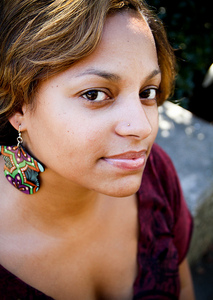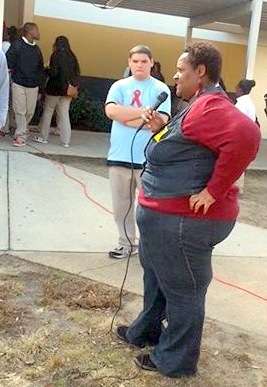
jewel bush
LaTanya Killingworth was fresh out of Alfred Lawless High School when she found out she was HIV positive. She casually took a test while visiting a health center with a friend. Weeks later, after she had forgotten all about it, she was called in to get the results.
“The day I found out I was positive I cried because I thought I would never have kids. It was a death sentence at that time,” Killingworth says. “I thought my whole life was gone at 19.”
Killingworth was near inconsolable when she delivered the life-altering news to her mother and sister who both assumed by her reaction she was pregnant. In the beginning, her family knew little about the transmission of the virus. She recalls an incident when she blew on her nephew’s food to cool it and her mother freaked out. A family member once forced her to use plastic forks and spoons and paper products while visiting. Another recommended drinking bleach to cure the virus.
Besides seeing a video in school, the New Orleans woman knew little about HIV.
“It had nothing to do with us … my family or friends,” Killingworth says. “It was a white gay man’s disease.”
With her youthful face and deep dimples, one would never guess Killingworth is near 40 or that she’s been living positive for 18 years. She relays her story with an unflinching candor. This hasn’t always been the case, though. Once upon a time she didn’t have the courage to even say she was HIV positive out loud for fear of being shunned.
All that changed after Hurricane Katrina when Killingworth faced the biggest health crisis of her life. She was off her meds, suffering from depression and “wasting,” a condition that causes muscle and fat tissue to melt away. She dropped 100 pounds and was hospitalized for a month.
“God told me that he still loves me regardless of me being at my lowest. My family was there for me so I stopped worrying about anyone else,” Killingworth says.
HIV rates are soaring in places like Jackson, Memphis and Miami. Baton Rouge and New Orleans are in the top three cities with the highest infection rates in the country. Welcome to the new battlefront for HIV/AIDS: the South. In the South, there is typically less access to education, affordable preventive health care and/or other life-saving resources. Despite the recent decline in HIV infections for all women, women of color remain disproportionately affected by the epidemic. The numbers translate to an even bleaker reality for Black women specifically, who account for 71 percent of new HIV diagnoses among women in the region.

LaTanya Killingworth speaking at Alfred Bonnabel Magnet Academy High School on Monday, Dec. 2, in observation of World AIDS Day, which was Dec. 1. (submitted photo)
“I hear a lot of males say, ‘I mess with girls like you because ain’t nothing wrong with you. You good,’” Killingworth says.
Part of the issue here is that families don’t talk about sex and sex education is not always taught in schools. If it’s not talked about in an honest, safe environment at school or church or if youth don’t feel comfortable talking about the subject at home, where will they learn?
“I’ve been talking to my son ever since he was 4 and able to understand. I’ve been talking to him about sex, HIV and about everything in today’s world. I quiz him. The main things stick with him like how it’s transmitted and how it can be prevented,” shares Killingworth, a mother to two young HIV-negative boys. “He might get confused about T cells and white blood cells, but he knows that it’s preventable and he don’t have to get it.”
Killingworth has volunteered with the NO AIDS Task Force and St. John No. 5 Faith Church, home to pastor Bruce Davenport Sr., an HIV-certified counselor who passes out condoms at his Gentilly church, as well as other HIV/AIDS serving organizations around the city. Today, her main focus is building the Positive Women’s Network in New Orleans. PWN is a national membership group of HIV-positive women — transgender women inclusive — working to implement HIV policies and programs that promote gender equity and human rights.
Killingworth, the secretary of the NOLA chapter, is fully aware that this is no easy work, but recognizes its necessity as the lives of our young people depend on it.
“If our children don’t see better, they won’t aim to do better,” she explains. “We have a long way to go.”
jewel bush, a New Orleans native, is a writer whose work has appeared in The (Houma) Courier, The Washington Post, The Times-Picayune, New Orleans Homes & Lifestyles Magazine, and El Tiempo, a bilingual Spanish newspaper. In 2010, she founded MelaNated Writers Collective, a multi-genre group for writers of color in New Orleans dedicated to cultivating the literary, artistic and professional growth of emerging writers. Her three favorite books are Their Eyes Were Watching God, The Catcher in the Rye, and Are You There God? It’s Me, Margaret.
LaTanya, your courage is and will continue to be a blessing to women and the African American population as you continue to tell your story and create awareness. Best to you!
Great read; thanks for the article.